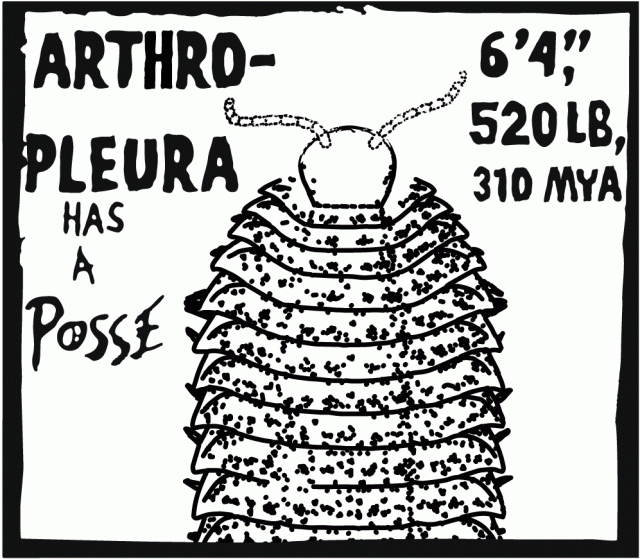
The extinct millipede Arthropleura was a giant at 6 feet long and 20 inches wide. These behemoths were the largest terrestrial arthropod to have walked on land. Fossilized in 300 million year old rocks in Pennsylvania, Kentucky, and Appalachia, you can still find pieces of their exoskeleton. Interestingly, closest relatives of Arthropleura are among the smallest of millipedes—the 3 mm long pincushion millipedes (Polyxenida).
Further reading
Lucas, S.G., A.J. Lerner, J.T. Hannibal, A.P. Hunt, J.W. Schneider (2005) Trackway of a giant Arthropleura from the Upper Pennsylvanian of El Cobre Canyon, New Mexico. New Mexico Geological Society, 56th Field Conference Guidebook, Geology of the Chama Basin, p. 279-282.
Schneider, J.W., R. Werneburg (1998) Arthropleura und Diplopoda (Arthropoda) aus dem Unter-Rotliegend (Unter-Perm, Assel) des Thüringer Waldes (Südwest-Saale-Senke). Veröffentlichungen des Naturhistorisches Museum Schleusingen, 13: 19-36.
Shear, W.A., G.D. Edgecombe (2009) The geological record and phylogeny of the Myriapoda. Arthropod Structure & Development, 39: 174-190.

